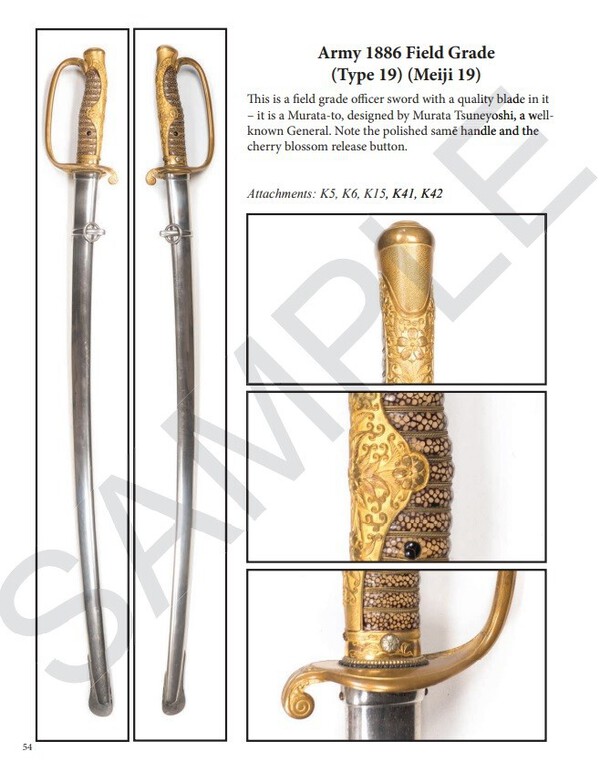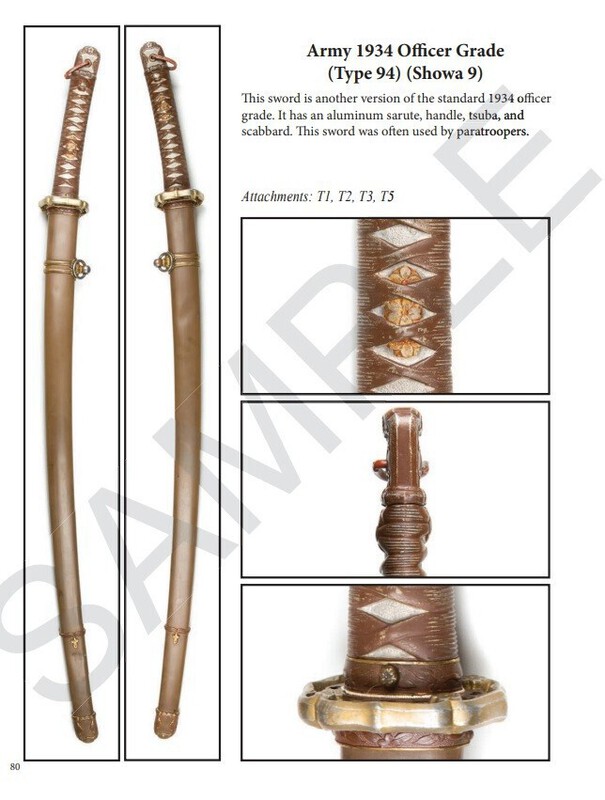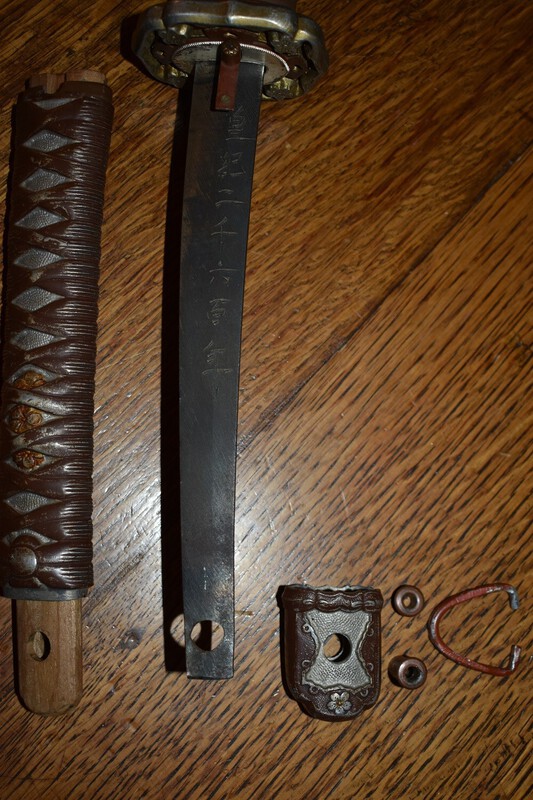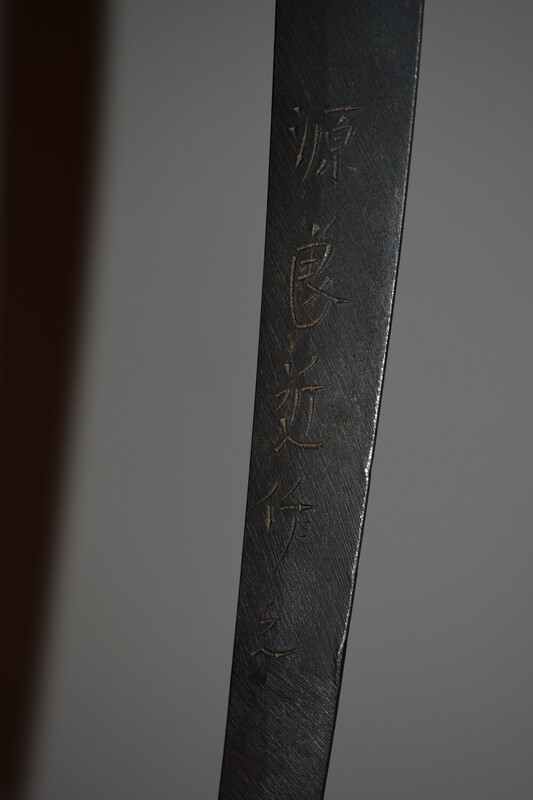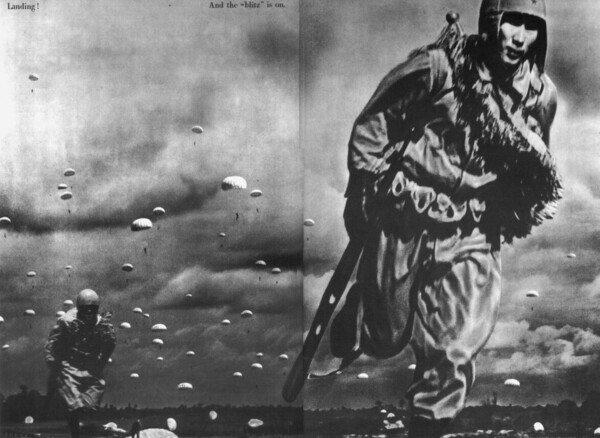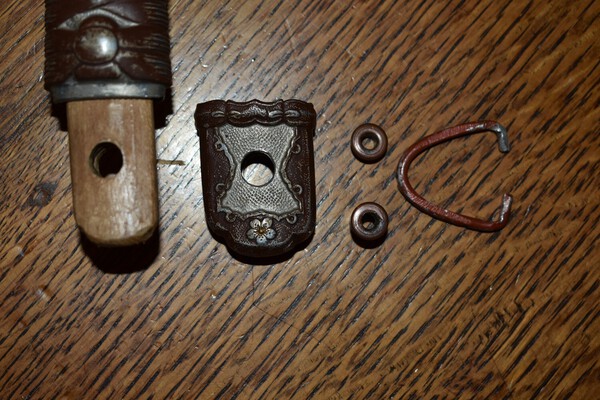
mdiddy
Dealers-
Posts
642 -
Joined
-
Last visited
-
Days Won
1
Content Type
Profiles
Forums
Events
Store
Downloads
Gallery
Everything posted by mdiddy
-
Significance of Silver Plated Type 98's
mdiddy replied to PNSSHOGUN's topic in Military Swords of Japan
RIA is a gun auction. Of their upcoming premier sale, which are their largest and most prestigious sales in the year, 14 out of 2085 lots are Japanese swords, < 1%. Sometimes their sales will have more than that, but sometimes they have less. When you consider the prices their guns command and the volume of guns they sell, Japanese swords are a rounding error to them at best. That said, RIA has superior customer service in the auction industry. They go out of their way to source photos for what their clientele need - at least that has always been my experience. Put yourself in their shoes - the moment they release a catalog, they are inundated with requests for add'l photos. Do they de-prioritize lowly gunto collectors spending much less than their top gun buyers? That has never seemed so to me. I have always received the photos requested, exactly as I requested them, and before the auction starts - even when I request them 2-3 days before hand. Of all the seller bashing that goes on, RIA really does not deserve it. Try asking them for the photos you need and be kind. They will take care of you. -
@SethThe sword is legit. The mounts are Type 98 shin gunto, matching parts. The blade shows a well-tended nakago (tang) with correct yasurime (filemarks) and placement of the mekugi-ana (peg hole). I recommend comparing the nakago on your sword to that of the other in question, and you'll see the other sword shows a very crudely shaped nakago with mekugi-ana placement that is off. I would not be so hasty to write the blade off as lower-end workmanship. The nakago of the blade shows a patina similar to that seen on gendaito, and if you look closely you can see a nioi guchi in parts of the blade that does not feature the tell-tale 'lightbulbs' associated with lower quality oil-quenching. It's a pity the blade is not signed, but I would recommend a more accurate description would be lower-end condition rather than lower-end workmanship, at least until we are able to see more.
-
From what we can see of the blade, the type of hamon does look similar to the sanbon-sugi of Kanemoto school, so possibly the blade dates to the 1500's. We would need to see more of the blade to confirm, such as the entire length, curvature, boshi (hamon in the tip), etc. The koshirae is newer, maybe late Edo. The tsukamaki wrap looks even newer, maybe re-wrapped at some point. Hope that helps.
- 1 reply
-
- 1
-

-
I realize this is an older post, but fwiw, that was another sword of mine and those are my photos. No cause for concern, glad the forum can reference them, though I should probably start adding a watermark. But the point I want to add is that I have historical photos of swords I have handled (e.g. > 100 Type 95's). If someone needs a reference check for a specific type, or is collecting data, always happy to see if I have something to contribute.
-
I can confirm this sword came from the Plimpton collection, see the attached excerpt from the book. I recall it was a really nice example when I handled it. Hope it works out for you.
-
Is this some kind of repair job?
mdiddy replied to Fuuten's topic in Auctions and Online Sales or Sellers
And fwiw, I don't think a full list of authenticated references and sources are required for everyone to post their opinion. Rather, a quick courtesy check-in with the seller to get their point of view, in advance of passing public judgement, would go a long way to preventing bad information from being publicly disseminated. Seriously, a quick email asking what are these odd specks on the sword is it. That way the seller knows the question is out there and can respond accordingly. And all this sarcastic childish chicanery about 'commiserations to the winner, etc' can be put to bed. Make sense? -
Is this some kind of repair job?
mdiddy replied to Fuuten's topic in Auctions and Online Sales or Sellers
No, this is not about being offended, this is about members that are passing questionable, unresearched, and/or under-informed opinions off as fact, particularly about others' live sales. And those members should be held accountable for the quality of their assertions just as you strive to hold seller's accountable to the quality of theirs, no? -
Hand forged blade in 95 mounts on eBay
mdiddy replied to drb 1643's topic in Military Swords of Japan
Good point! And also naval dirks, parade sabers, court swords, artillery swords, blades in cheap shirasayas, Meiji period exports, etc. On the habaki question, one thing that strikes me is the shape of the habaki fitting into the fixed width of the Type 95 saya. Pretty sure that arsenal blades were thinner, less niku, etc as compared to forged blades like gendaito, nihonto, maybe even showato. It would be very challenging to create the custom fit for a habaki inside the metal Type 95 saya. Maybe this is why we see habaki on the Plimpton Yoshichika and the other one that Bruce documented (Yoshitsugu?) where they had Type 95 tsuka and habaki, but not the Type 95 saya. -
Hand forged blade in 95 mounts on eBay
mdiddy replied to drb 1643's topic in Military Swords of Japan
I understand that perspective, but how can you explain the Plimpton Yoshichika? It is dated 1940, the nakago is very long to fit the full length of the Type 95 tsuka, and the only mekugi-ana is at the base of the nakago? -
Is this some kind of repair job?
mdiddy replied to Fuuten's topic in Auctions and Online Sales or Sellers
Maybe you are missing the point. I’m not questioning whether umegane are flaws nor how they are disclosed, I’m questioning if you know enough about what this is to publicly pass judgement. Maybe Tsuruta-san left it out of the description because he trusts his clientele to either 1) know what they are looking at or 2) if they have a question to reach out to him directly and ask. I question if you did either before publicly commenting on someone else’s sale. And let’s be frank, your track record of accuracy is less than 100%. Besides your comments on my sword here that were off base, there was also this jewel recently where you went off half-cocked without conducting a little more background check. -
Is this some kind of repair job?
mdiddy replied to Fuuten's topic in Auctions and Online Sales or Sellers
How can you say with such certainty? Have you considered to reach out to Tsuruta-san to ask him directly before passing a public judgement here? -
Hand forged blade in 95 mounts on eBay
mdiddy replied to drb 1643's topic in Military Swords of Japan
Oh WOW, now that is very cool! Had no idea that your example was also by Kii Masatsugu. That is a very nice sword! -
Hand forged blade in 95 mounts on eBay
mdiddy replied to drb 1643's topic in Military Swords of Japan
I like ending on a happy note, but before we do I want to take one more turn on this thing. I don’t know how we define ‘tossing around thoughts’, but comments like ‘Commiserations to the "winner" of the auction’ seem pretty far from that intent. Jumping to a conclusion before any real ideas were actually tossed around doesn’t help either. I won’t belabor the point, but I would make a simple request. If you are going to discuss items in the middle of someone’s sale, it would at least show courtesy to the seller to inquire and invite their input before reaching a half-baked conclusion and publicly passing judgement. -
Hand forged blade in 95 mounts on eBay
mdiddy replied to drb 1643's topic in Military Swords of Japan
I'm not about to claim to be the most learned on the topic but there is some info out there: 1. From wikipedia of all places 2. Interesting source on the topic 3. Book available on amazon -
Hand forged blade in 95 mounts on eBay
mdiddy replied to drb 1643's topic in Military Swords of Japan
This swordsmith is Kii Masatsugu. I think there are several extant examples from him. He was from Kyushu. Here is one reference from Stein's site, listed under 'JYUNGENRO' on left hand side. -
Hand forged blade in 95 mounts on eBay
mdiddy replied to drb 1643's topic in Military Swords of Japan
Maybe we can just leave it at: 'when it gets a fresh polish the line will be correct and the shadow is gone." The former about who polished it ventures into what I call 'negative insinuation' and as the seller, it is my imperative to make sure we have a direct and clear understanding on this. I hope you can understand. Thank you Chris - I do appreciate and respect your comments and the healthy debate we can have. Happy to discuss more. -
Hand forged blade in 95 mounts on eBay
mdiddy replied to drb 1643's topic in Military Swords of Japan
I'm not disagreeing the correctness of the polish. I'm saying it was not done by a post war Westerner because other attributes are correct like niku which you can not see from photos. I think it more likely this is wartime polish maybe by less trained wartime polishers (see photo). What do you see on other wartime swords like showato? Do you see Mukansa polish? -
Hand forged blade in 95 mounts on eBay
mdiddy replied to drb 1643's topic in Military Swords of Japan
Thanks for the additional comments. I agree it is a good blade and would look great with a fresh polish. I don't think it was polished by an untrained collector. Frankly, the current polish is still better than that from an untrained collector. Some nuanced attributes which can't be seen from the pictures - e.g. niku - are ok and not maligned like from an untrained polish. I agree with your points on the koshirae and agree it's an interesting sword. -
Hand forged blade in 95 mounts on eBay
mdiddy replied to drb 1643's topic in Military Swords of Japan
Hello Bruce, I greatly appreciate your detailed and objective request for more information. I am not offended and would be more than happy to share what I can about this perplexing sword. Here are answers to your questions to the best of my abilities: 1. Yes, it had the coil spring under the latch when I acquired it. In fact the sword would not function properly without it - the spring is tight and went flying when I initially disassembled the tsuka (doh!). I found it after a fitful search of my floor. Without the spring, the latch does not work at all. 2. No, to my eye the lower mekugi-ana at the end of the nakago did not look old and there were extra wood inserts at the bottom of the tsuka that were clearly in place for many years that were stabilizing the nakago (see answer to Geraint above for more info). 3. I 'acquired' the term 'paratrooper gunto' from my work on the Plimpton collection. I have seen three other variations of this type of sword before - two in other's collections and then the one I handled from Plimpton. The Plimpton sword was a Yoshichika and it only had the lower mekugi-ana. The blade was in a NCO tsuka but with a Type 98 saya (see attached photos below). Plimpton suggested these types of swords belonged to paratroopers. The Plimpton sword does have a little different configuration, in addition to the saya and lack of a second mekugi-ana, it also had a unique fuchi with spring clip and the blade had a habaki. Of the other two variations I saw, one did not have a habaki and the other did. I expect these NCO-hybrid swords are an area where there may be few examples and little data. Given Plimpton's experience, I anchored to his definition, understanding that the sword I am offering is a little different *and* late-war (check the date of the Masatsugu). Also, the saya on mine is not numbered so clearly the NCO saya was not previously housing a standard NCO arsenal blade. 4. "The mountings are a very rare and high end Type 95 Shin Gunto": Yes, they are standard NCO type koshirae, but the point I would make is the same as last point from #3 above, there is no serial number on the saya so the koshirae did not previously house an arsenal blade. I have seen one other Type 95 without a serial number on the saya, from an older collection in the U.S. (I'll see if I can find the photos), and actually there was no serial number on that arsenal NCO blade either. This other NCO example is a separate topic, but point being it's rare to not have serial numbers on these types of koshirae. And, in my mind, that indicates that the mounts in question were used for the Masatsugu only, and not a prior arsenal blade. Please let me know what you think. Happy to discuss. -
Hand forged blade in 95 mounts on eBay
mdiddy replied to drb 1643's topic in Military Swords of Japan
Hello Chris, Good questions and fair points. I would add that we see nihonto in all kinds of configurations of military mounts - early court swords, police wakizashis, naval patrol sabers, etc. There are also other examples of gendaito in NCO type mounts (see reply to Bruce below). As in any large organization, there are always those that go their own way. We see 99.5% of menuki on Type 98 koshirae are the same, but 0.5% are not, usually on swords belonging to higher ranks. Also, what were the rules - or were there any rules - on application of kamon to kabutogane, menuki, even habaki? Why no standard uniformity on habaki? What about lengths of nihonto in military koshirae, those are not uniform either? With a little more time, I can rattle off a hundred other inconsistencies. The Japanese military was made of people not machines, so there is some variance (however small) and edge cases that have to be considered within that context. Hope that helps and happy to discuss. -
Hand forged blade in 95 mounts on eBay
mdiddy replied to drb 1643's topic in Military Swords of Japan
Hello Geraint - it is a fair point and observation. Yes, this NCO tsuka must have been repurposed for this sword. The nakago has an extra mekugi-ana placed in the position for normal usage in buke-zukuri type koshirae. However to my eye the lower mekugi-ana is not 'new', meaning not yesterday, not last year, and not in the past 70+ years. Attached is a picture of the kabutogane from another example of this type of sword I had. That blade was by Yoshichika and it did not have an earlier mekugi-ana from a former buke-zukuri koshirae, indicating it was purposefully made for a type of NCO koshirae. What I want to point out from this photo though is the wooden insert from the tsuka that extended into the kabutogane. What is not evident in the sword I am selling is that there were wooden pieces similar to this in the bottom of the tsuka when I first removed it. They were shaped similar but broken. It was clear they were old and had been carefully put in place long ago to keep the nakago stabilized within the tsuka as there was not a full wooden core. I hope this makes sense and I wish I had photos of this feature to share. Point being, those wooden inserts that were not photographed for the listing, were old, of the correct age, and clearly not done by a westerner who was unfamiliar with these swords. Also, I would request in general to not make hasty presumptions of guilt (e.g. 'give away here') without a little more inquiry and investigation. Making determinations from one photo - taken under dynamic photographic constraints (i.e. with a flash) is really distant from assessing the sword in hand. I realize not everyone can have the sword in hand and we all want something to talk about, but I'm imploring to be careful with comments that have negative insinuations. As the seller, I don't have to be here, but I want to be and I want to be helpful too. -
Hand forged blade in 95 mounts on eBay
mdiddy replied to drb 1643's topic in Military Swords of Japan
Hi, I'm the seller of this sword here. I'm all for educated debate amongst collectors and others learning from others in the community, but WTF is this? Just some nasty sarcasm from a sword troll. Thank you for your learned contributions to the field... -
Hello All, I want to share a quick update with the forum that the book by John Plimpton showcasing all of the swords in his collection that have been for sale recently is now available for pre-order. The book is called Swords of the Emperor - A Guide to the Identification of Imperial Japanese Swords, 1873 – 1945. The pre-order information can be found here: https://www.headstamppublishing.com/purchase/swords-of-the-emperor-standard-edition. I hope everyone who wants a copy can order one and enjoys it along with a sword from the collection!
- 1 reply
-
- 3
-

-

-
Plimpton Swords Going to Auction
mdiddy replied to mdiddy's topic in Auctions and Online Sales or Sellers
Just a quick update, the Plimpton book is now available for pre-order here: https://www.headstamppublishing.com/purchase/swords-of-the-emperor-standard-edition

